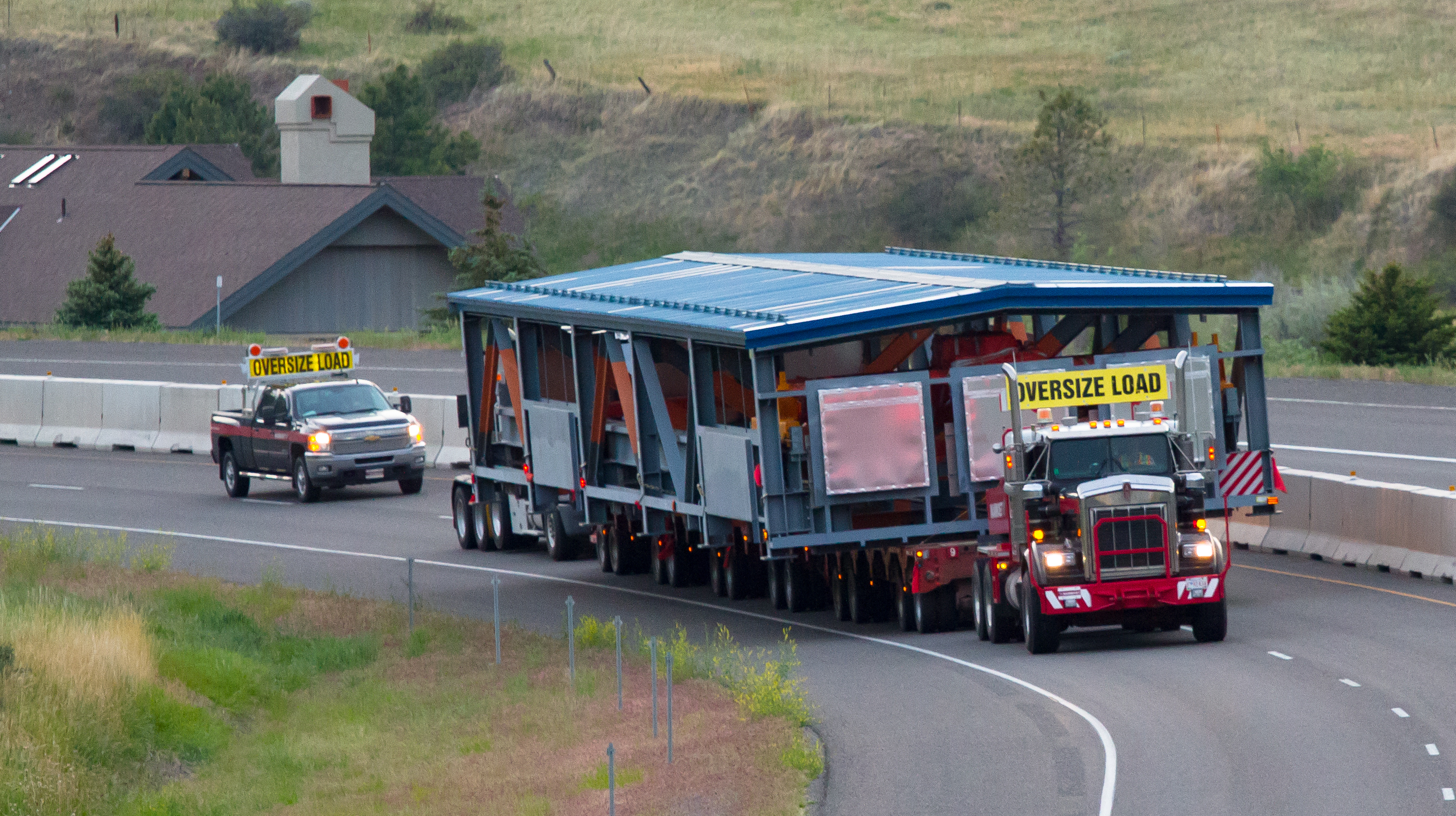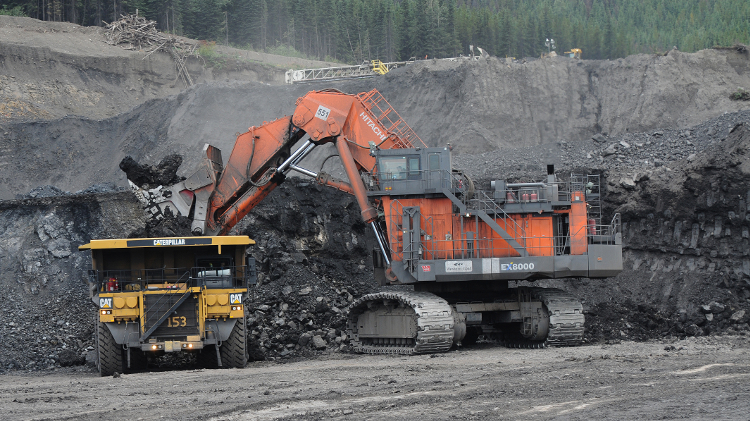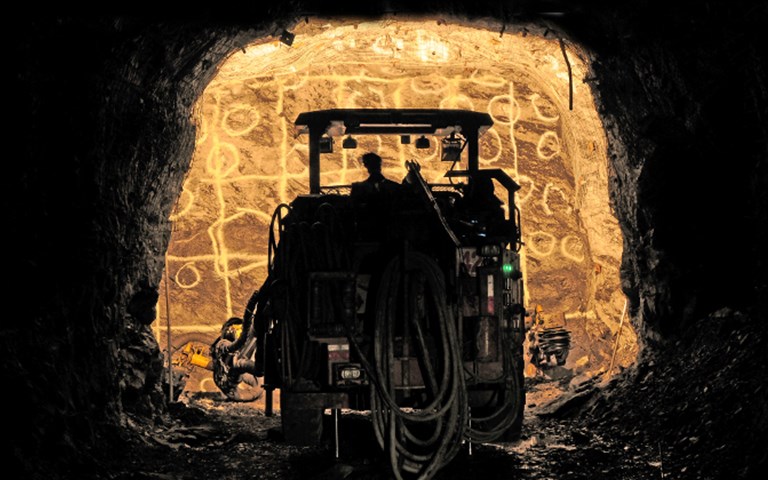Underground at the Casa Berardi mine. Courtesy of Hecla Mining
When Hecla Mining made its bid for Casa Berardi in 2013, part of its pitch to Aurizon’s shareholders was the expertise that the then-120-year-old company had in underground hard rock mining at its operations in Idaho and Alaska. At that time, the average mill throughput at Casa Berardi was 1,600 tonnes per day. By the end of 2017, that number had nearly doubled to 3,551.
Casa Berardi first went into production in 1989 and operated until 1997, when it was put on care and maintenance. It resumed commercial production in 2007. Today the processing plant receives ore from two mining zones underground as well as a shallow open pit, which began producing in 2016. The underground mining method consists of longhole transversal stoping for wider mineralized zones and longitudinal retreat stoping for narrower ore bodies. Currently, the mine life is estimated to be nine years.
Alain Grenier, vice-president of Hecla Quebec, and the general manager at Casa Berardi, is pleased with the progress and the savings he has seen at the mine. He has managed the mine for four years, overseeing a number of massive changes, including an overhaul of the production schedule, deployment of remotely operated and autonomous machinery, and installation of production-boosting and safety-enhancing telemetry and communication technologies.
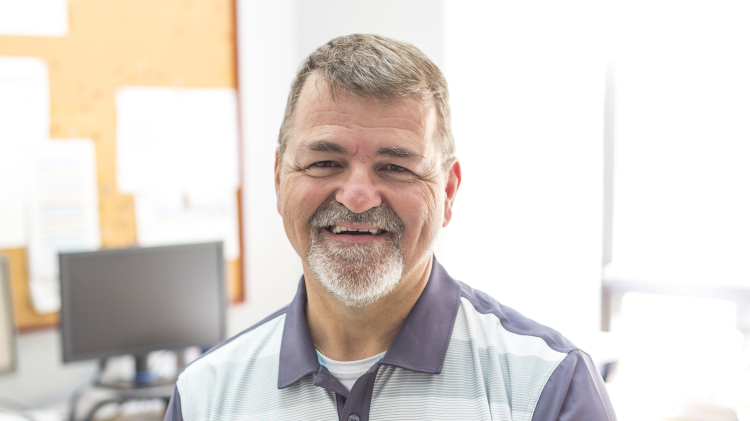 Casa Berardi general manager Alain Grenier. Courtesy Hecla Mining/Mathieu Dupuis
Casa Berardi general manager Alain Grenier. Courtesy Hecla Mining/Mathieu Dupuis
The first step, however, was to improve the mining process using what was already in place, said Grenier.
The company began by focusing on scheduling, planning and improving the current operation using its existing infrastructure. Then it was on to constructing the underground garage and the ore pass/waste pass network and investing “a lot of time” in planning the production schedule. By 2015, the operation added 600 tonnes of ore to the daily throughput of the mill to bring the rate up to 2,200 tonnes per day.
Steps with tech
At the end of 2015, Hecla invested $200,000 in a remote rock breaker operated from the surface and developed in-house automated hoisting and remote loading technologies. The automatic hoisting has helped move an additional 120 tonnes per day, and all three technologies provide a safer work environment by moving workers above ground.
Related: To access the gold far below the surface at its Goldex mine, Agnico Eagle gave an innovative haulage system the opportunity to prove its worth
“Implementing these technologies bridged the dead zone between day shift and night shift, those two hours for the dust and smoke evacuation,” said Grenier, referring to the period when workers would previously be moving around between shifts and machinery was unable to operate. “Following that, we moved on to production drill automation. We gained at least 15 metres per day with the automated drill, moving from 335 metres per day to 350 per day, so it was a serious gain there.”
In 2016, Casa Berardi became the third operation in the world to invest in the new 40-tonne fully autonomous Sandvik TH540 articulated underground dump trucks, after Petra Diamonds’ Finsch mine in South Africa and Barrick’s Hemlo mine in Ontario. The first truck unit monitored and controlled from a room at the surface is improving payloads by eight per cent and reducing energy use by 17 per cent, a true win-win said Grenier.
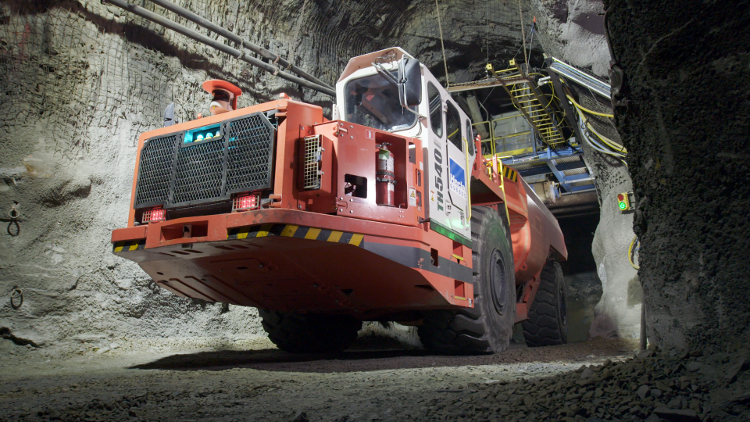 Equipment upgrades at the mine included the commissioning of a Sandvik TH540 automated haul truck. Courtesy of Hecla Mining
Equipment upgrades at the mine included the commissioning of a Sandvik TH540 automated haul truck. Courtesy of Hecla Mining
The fleet of older AD30 Caterpillar underground haul trucks on site was reduced from 13 down to nine with the introduction of the two new Sandvik trucks. Hecla installed sensors for telemetry on two of the older trucks to track the location and performance data of each piece of equipment in real time. The AD30s fitted with sensors are now being migrated from the west mine to the east mine as exploration drilling generates new reserves in the east.
“We follow the engine temperature, oil temperature, transmission data, payload and, of course, tire pressure,” said Grenier, commenting on the benefits of predictive maintenance and the ability to fix mechanical issues or replace parts before a breakdown or scheduled maintenance. “The mechanics are now able to fix issues on the trucks before maintenance calls. It’s the reason we were able to crank up the volume of ore handled by the underground equipment by eight per cent.”
The automation transition was not all smooth sailing. Although the new automated Atlas Copco jumbo S2C drill provided a 17 to 20 per cent increase in metres per shift and won over the approval of the operators, the shift was successful when Hecla tried to retrofit two of the decade-old jumbos in 2017.
“One of our challenges is making sure what you see is what you get,” said Grenier. “If the retrofits work as promised, the workers will be happy, otherwise they start to grumble.”
Harmony between people and machines
In contrast, the automated hoisting and remote rock breaking systems were well accepted by the workforce in part because they were designed in-house. On the surface at Casa Berardi, workers remotely operate the jet washer and three rock breaking stations located underground, which were designed, programmed and wired on-site.
“We are really proud of the automated hoisting,” said Grenier. “We had help programming the hoist, but all the devices to automate the hoist were made in-house by our workers. Even the remote control for the four hydraulic rock breaker units.”
The incident frequency rate, calculated using OSHA’s formula, at Casa Berardi in 2017 was down to 4.1, less than a third of the rate it was in February 2014, when it peaked at 15.8. Telemetry, said Grenier, has had a big impact on worker safety. In areas where personnel have not been removed from underground, sensors are being installed on equipment to be able to recognize workers, and collision avoidance devices are being added to the heavy equipment.
“Equipment is getting bigger and bigger, but humans are still the same size,” said Grenier. “In 1997, a 15-tonne truck was a huge piece of equipment, now we operate 40-tonne trucks here at the mine and some operations run 60-tonne trucks underground. It is our responsibility to install devices to prevent collisions with human beings.”
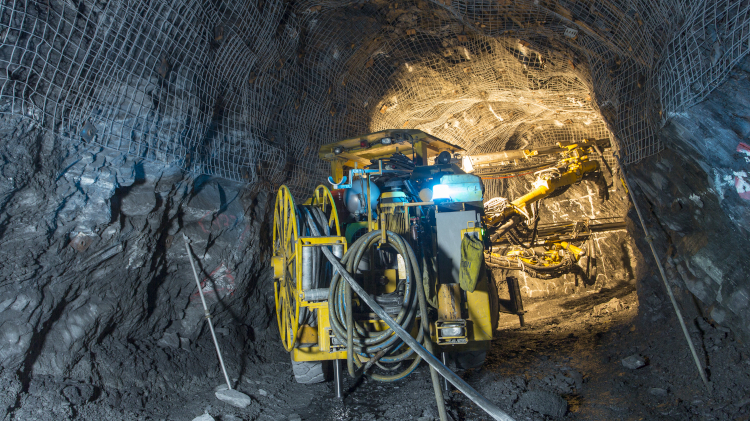 With the help of equipment monitoring, the mine has improved availability using predictive maintenance. Courtesy of Hecla Mining
With the help of equipment monitoring, the mine has improved availability using predictive maintenance. Courtesy of Hecla Mining
Despite the transition to automation, the workforce has grown by 200 people from 750 workers on site in 2014 to 950 working in May 2018. What group of workers is growing the fastest? Information technicians. On site there are four information technology people with at least 10 programming, instrumentation and control technicians, plus another 15 people for communication and control.
Building a fibre optic backbone
“We feel we’re into a new era in the operation mode,” said Grenier. “The next step for us is the LTE technology to use cell phones underground.” Hecla expects to have that deployed by 2020 in the eastern section of the mine, which will enable workers underground to exchange data with those on the surface via cell phones and tablets.
Mobile Wi-Fi access points to support telemetry systems on mobile machines are currently being deployed throughout the mine and mounted in selected supervisor or service vehicles. In addition, by the end of 2018, 15 access points or “hotspots” will be installed in strategic locations, and extended in 2019 and 2020. Hecla plans to continue the Wi-Fi deployment underground via a fibre optic cable “backbone” in the western section of the underground mine and deploy LTE technology for the surface open pit and the eastern section. Hecla is working with Montreal-based technology company Newtrax to eliminate the current digital divide between surface and underground. The goal is more efficient communication between people and equipment.
Related: National Research Council brings ground support into the digital age with new rock bolt sensors
While Grenier is pleased with the collection of various automation technologies now assembled at Casa Berardi, and the safety, production and environmental improvements that accompany them, he is also looking forward to the next generation, when Hecla achieves interoperability at the mine.
“Within the next three years, trucks and scoops will recognize each other, I’m sure of that,” said Grenier. Overall, the process is to guide the mine closer to what is referred to as “Industry 4.0,” an interactive network of robotics, sensors and machines regulated by data-driven computer algorithms and controlled via the Internet and its users across Hecla’s operations, while keeping a sharp focus on the end results.
“What spurred the decision to automate was basically to ensure the sustainability of the operation and the employment,” said Grenier. “We’ve focused on ways to enhance production while improving worker safety and the environment, and it’s lowering our costs. We have the tools now to handle anywhere in the economic cycle.”
Project specs
Mine life: 9 years
Throughput 2017: Underground 724,542 Tonnes; Open pit 377,259 tonnes
Average grade: Underground 4.3 g/t; Open pit 2.25 g/t
Gold production: 2017: 156,700 oz; 2016: 145,700 oz
All-in sustaining cost for 2017: $1174/oz
Employees: 950
